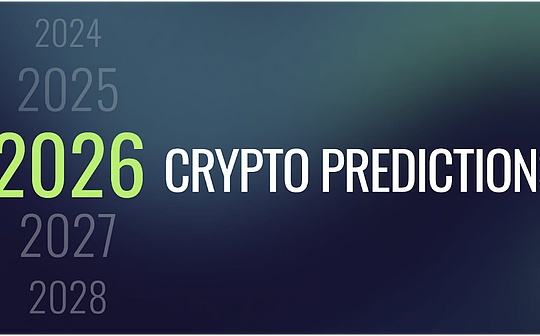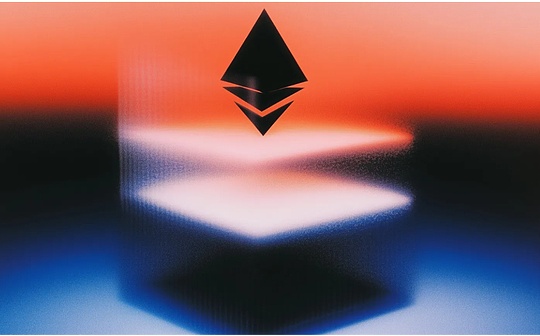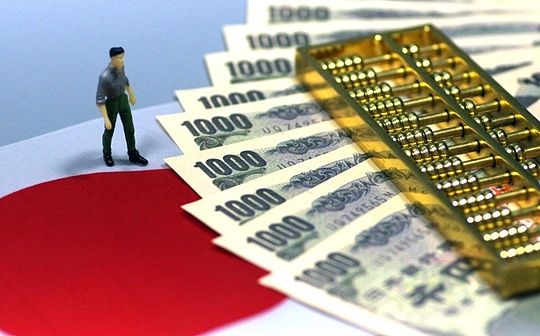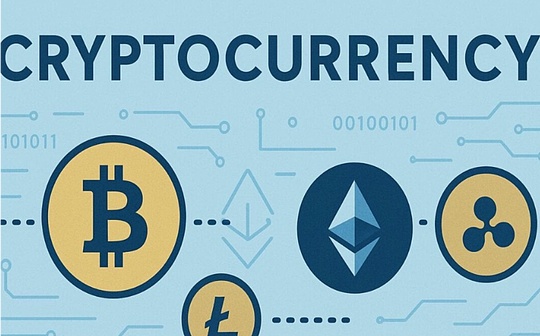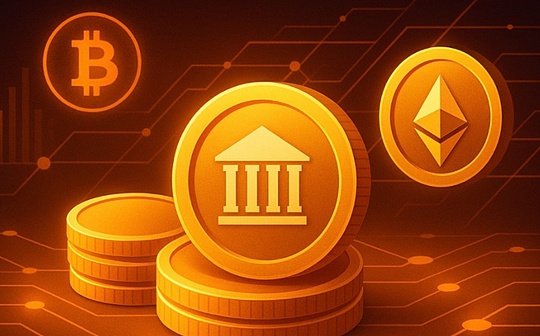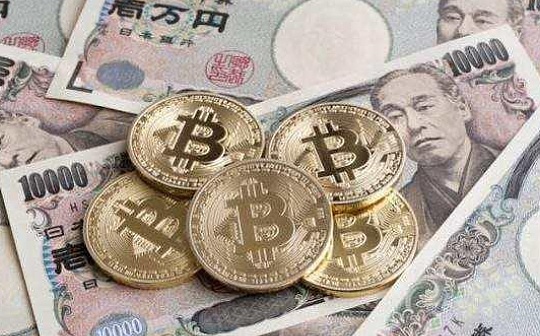
Author: Rick Maeda, Presto Research; Compilation: Tao Zhu, Bit Chain Vision Realm
summary
-
As the birthplace of the two largest cryptocurrency exchanges in history, the history of cryptocurrencies in Japan has always been very bumpy.
-
This forced regulators to involve earlier than other countries, so as to provide clear regulatory framework for the industry as soon as possible.
-
However, strict supervision, coupled with high tax rates, makes Japan’s competitiveness lower than neighboring countries such as Singapore and Hong Kong.
-
In the case of sluggish sales and lack of domestic entrepreneurial environment, Japan’s challenges facing the web3 industry are widely developed, and Fuxing will need to make a meaningful change of policy.
Foreword
Due to lack of benefits and lack of vitality in the domestic stock market, Japanese retail investors have long been known for their interest in leverage transactions.Japan’s retail cryptocurrency traders are known for their influence on the influence of fluctuating Turkish lira/yen foreign exchange transactions, so that the international financial community has created the term “Mrs. Watanabe” to represent them.When Bitcoin and other cryptocurrencies entered the field of retail investors in the early 2010s, Japanese short -term traders eagerly accepted this profound asset category.However, investors soon faced domestic challenges, including the two most famous exchange hackers in the history of encrypted history, coupled with the relatively lack of attractiveness from the perspective of entrepreneurs and investors, weakened the country inCorrelation in the field of web3.
In this research article, we (1) introduced the history of Japanese cryptocurrencies, especially in various regulatory development, (2) to see the situation in Japan today, and finally (3) explore several major in the domestic crypto industryParticipants.
The history of the encryption industry in Japan
MT. GOX and Coincheck were marked with a journey of cryptocurrency in Japan by hackers, which led to adopting strict regulatory measures aimed at protecting investors and ensuring stable financial systems.The country has continuously developed its regulatory framework to cope with new challenges and opportunities in the field of cryptocurrencies.
The rise of MT. GOX in the early years
2009:
-
Bitcoin is the first cryptocurrency and was launched by an unknown person or group, as Satoshi Nakamoto.In the early years, the awareness and adoption rate in all regions were very low. Although the creators used the Japanese pseudonym, this was not different in Japan.
2011 ~ 2013:
-
MT.GOX was a Bitcoin exchange headquartered in Tokyo. It was the world’s largest Bitcoin exchange at the time. During its heyday, most Bitcoin transactions were processed.(Figure 1).
Figure 1: As of the end of 2013, the global CEX transaction volume.

MT. GOX hacker attack and consequences
2014:
-
MT.GOX suspended transactions, closed its website and applied for bankruptcy, and announced that about 850,000 Bitcoin was stolen due to security issues, which accounted for almost 7%of all Bitcoin (750,000 customers and 100,000 customers worth around $ 450 million at the time (750,000 customers.They are their own Bitcoin).The survey showed that poor management and improper security measures caused losses.
Figure 2: 3 days after MT. GOX stopped withdrawal withdrawal, BTC once fell more than 40%.

Supervision development and early supervision
2015:
-
The Seventh -way Group’s Government Policy Formulation Institutional Financial Action Special Working Group (FATF) issued a guidance policy, it is recommended that countries supervise virtual currency transactions to combat money laundering and terrorist financing.
-
The Japanese government began to draft legislations aimed at supervisory exchanges to protect consumers and ensure financial stability.
2016:
-
The Japanese Cabinet and Congress adopted a revision bill for the Payment Service Law (PSA) and the “Financial Tools and Trading Law” (FIEA).These amendments recognize virtual currency ($ BTC, $ ETH, $ XRP, $ LTC, and $ BCH) as a payment method, and proposed supervision requirements for cryptocurrency exchanges, laying a foundation for comprehensively implementing Canadian Crypture regulations.
-
The task of the Financial Services Bureau (FSA) is to prepare for the implementation of these regulations, focusing on the registration requirements of the exchange, network security measures and anti -money laundering (AML) agreements.
Coincheck was attacked by hackers and strengthened supervision
2017:
-
The revised “Payment Service Law” will take effect in April, requiring the cryptocurrency exchange to register with the FSA and comply with AML and understand your customer (KYC) regulations.It also classifies Bitcoin as a prepaid payment tool.
-
Bitcoin and cryptocurrencies are very popular in Japan. Many businesses such as Japan’s largest electronic product retail company BIC Camera have begun to accept Bitcoin as a payment method.
-
The National Taxation Bureau (NTA) classified cryptocurrency income as “miscellaneous income” to pay taxable.
2018:
-
Coincheck, one of Japan’s largest cryptocurrency exchanges, was attacked by hackers, resulting in about 523 million NEM ($ XEM) tokens, at the time worth about $ 530 million.Coincheck finally refunded the customer in full.This hacker attack is still one of the largest cryptocurrency robbery in history, and reminds FSA to take more stringent regulatory measures.According to reports, the exchange stores $ XEM in a hot wallet instead of multiple signature wallets.In Figure 3, the chart below shows $ 76% within two months after the hacking attack.The first quarter of 2018 was the cruel beginning of the bear market, but even though we used the $ xem/$ BTC in the top chart to eliminate the impact of the bear market, the currency pairs fell more than 61%.
Figure 3: View the price trend around the coincheck hacker.

-
ZAIF is a small exchange that has lost approximately $ 60 million by hackers.
-
The Japan Virtual Currency Trading Association (JVCEA) is a government -approved self -discipline agency to improve industry standards and be responsible for approving the tokens on the exchange.
-
The FSA issued a business improvement order to a number of cryptocurrency exchanges and conducted on -site inspections to ensure that it complies with new regulations.
-
The Limited Limit of Cryptocurrency Margin Transactions is 4 times the amount of deposit, which aims to curb speculative transactions and protect investors.
Lexal trading regulations and sustainable development
2019:
-
Coincheck has now complied with new regulations and resumed operations.
-
The Japanese cabinet approves new regulations to limit the leverage of cryptocurrency margin transactions to 2-4 times that of initial deposits.
-
The revised “Financial Instrument and Trading Law” (FIEA) and the “Payment Service Law” (PSA) took effect, which further tightened the supervision of cryptocurrency exchanges and securities tokens (STOs).
2020:
-
FSA reduced the maximum leverage of margin transactions to 2 times.
-
The further revisions of PSA and Fiea are implemented, focusing on strengthening user protection and market integrity.
2021:
-
Japan continues to develop its regulatory framework, focusing on strengthening investor protection, network security, and preventing money laundering.
-
FSA has established a new regulatory agency to supervise cryptocurrency trading operators and ensure that it is constantly changing regulations.
-
FSA requires JVCEA to implement the “cryptocurrency travel rules” of information sharing during transaction.
Recent development
2022:
-
FSA introduced additional guidelines for exchanges to host digital assets, emphasizing the necessity of strong internal control and risk management practice.
-
JVCEA introduced travel rules in its self -discipline rules, while the Cabinet Secretariat amended the “Prevention of Criminal Revenue Transfer Law” (APTCP) to perform this rule.
-
The Japan Taxation Commission amended the tax law to exempt the token issuers to pay corporate taxes on unrealized cryptocurrency income.
-
The possibility of exploring the issuance of digital currencies (CBDC) of central banks in Japan, the Bank of Japan is conducting experiments and research.
-
The House of Lord passed a bill for supervision stable coins, monitoring money laundering and cracking money laundering activities.
-
The Liberal Democratic Digital Society Promotion Headquarters released the “NFT White Paper: The NFT Strategy of the WEB 3.0 era in Japan”, which reflects the policy recommendations of NFT development and protection.
-
The Economic and Industry province (METI) has established a web3 policy office to create a supportive business environment for Web3 related industries.
-
FSA continues to cancel the ban on stable coins issued by foreign countries.
2023:
-
FSA continues to improve its regulatory methods, focusing on emerging trends such as DEFI and non -alternative to the tokens (NFT).
-
FSA initiates a public consultation on the draft order of the “APTCP Execution Order”, which clearly stipulates the applicable situation of travel rules for Japanese virtual asset service providers (VASP).
-
Japanese Prime Minister Kishida Kishita emphasized that web3 is the pillar of economic reform, describes it as “new form of capitalism”, and emphasizes that it promotes growth potential by solving social problems.
2024:
-
The JVCEA plans to simplify the listing process of digital currencies to simplify the approval process of tokens in the market.
-
It is expected to cancel the lengthy pre -screening process of the authorized exchanges to certain digital assets.
-
The cabinet approves a bill that may allow venture capital companies to directly hold digital assets.
Japan’s efforts to use web3
Japan’s weaknesses in Web3 originated from regulatory restrictions, especially on the exchanges and taxes.The exchanges are strictly supervised by the FSA. The local CEX lacks major tokens and cannot provide stable currency liquidity (Figure 4).
Figure 4: Local CEX products are limited.Note: We pay attention to the USDT pairing tokens of Binance and Bybit, because neither of the two provides US dollars to legal currency.For BYBIT, $ Shib and $ Bonk provided in the form of 1,000 units ($ 1000BONK and $ Shib1000).

In addition to Bitbank, its tokens on the Japanese exchanges are slightly higher, which has strengthened the dominant position of the major exchanges in the Japanese exchanges (Figure 5):
Figure 5: The market share of the top 2 assets of the top 2 assets in Japan and the top of the international central exchange.Dumpling: 2024 to the present.

At the same time, cryptocurrency returns are deemed to be miscellaneous income, so the maximum tax rate should be 55%according to the personal income tax level and local tax tax (Figure 6).
Figure 6: Japan’s capital gains tax on cryptocurrencies.

Before the institutional interest appeared, the yen trading volume was greater than the US dollar transaction volume, but the above challenges made the situation full of challenges.
Figure 7: The market share of the yen in the global legal currency transaction volume.

The absolute dominant position of the yen (more than 60% of all the trading volume of all legal currency) is short -lived, and gradually becomes unrelated during the new crown epidemic (Figure 7).However, over time, the total share of the legal currency transaction volume in Asia has remained stable, and the transaction volume has shifted from the yen to the Korean won (Figure 8).
Figure 8: The yen trading volume is relatively market share compared to other currencies.

It is worth noting that when we adjust the transaction volume of the yen and the US dollar to the historical high before November 2021, the yen trading volume shows a stronger recovery in this cycle (Figure 9).
Figure 9: The transaction volume of the yen and the US dollar is re -adjusted by the previous high point in November 2021 = 100.

In terms of institutions, Japan is a country with rich content intellectual property. It has companies such as Sega and Talks Agency, which makes it the first choice for NFT and game -driven projects.Theoretically, these companies have brought attention, users, research capabilities, and capital -the problem is that these areas have effects in any country, and this has been touted as a Japanese bull market for many years.
Politically, recently, the ruling party, which is worried about relaxing control, failed in the House elections in April 2024, which brought motivation to the Constitutional Democratic Party of the opposition.However, given that the Liberal Democratic Party has continued to occupy a majority seat in the two houses of the Congress, and the international and domestic competition adopted by Web3 is increasingly fierce, we believe that these situations are not worthy of attention.
There are many resistance in cryptocurrencies, but simply speaking, many problems are only cultural issues, making it unable to quantify and have no simple solutions.For a global city, the level of English is extremely low, and the spirit of entrepreneurship is naturally lacking. The stable work of large local companies is still regarded as the pinnacle of graduates’ employment. The high caution of enterprises and the essence of the “fast action” of cryptocurrencies are tied.Coupled with the challenges of tax and CEX products, it is difficult to imagine that Japan’s adoption rate will soon catch up with its Asian neighbor.
The main participants of the Japanese cryptocurrency market
i) CEXS
As discussed in the previous section, compared with international peers, the Japan Central Exchange has always been difficult to compete in product supply, and high capital gains tax has lacks attractiveness of cryptocurrency transactions.These challenges are reflected in the trading volume of domestic exchanges. Although this is the differences observed outside the cryptocurrency exchange, the UI/UX of these exchanges lags behind foreign competitors.
There are 29 encrypted asset trading service providers registered in FSA in Japan, and we have discussed the current situation through charts.
-
Bitflyer is the largest trading exchange, and has maintained a dominant position in recent years.
Figure 10: Japan CEX transaction volume share.

-
However, compared with top international exchanges, Japan’s domestic transaction volume is almost without competitiveness.Since the epidemic, Binance has left the Japanese exchanges behind.
Figure 11: Total stock transaction volume of Japanese exchanges and Binance.

-
This difference can also be observed when comparing the depth of the Exchange’s spot BTC order book.
Figure 12: The spot BTC order book of the Japanese exchanges and Binance is 1% depth.

II) Investment Group:
Sbi digital
SBI Holdings (Tyo: 8473) is a financial service group headquartered in Tokyo, which was established in 1999.The company was originally affiliated with SoftBank Group and was independent in 2000.SBI Holdings business involves multiple fields such as financial services, asset management and biotechnology.The company is famous for combining technology with traditional financial services to promote innovation and growth.
SBI provides a variety of traditional finance and encryption services through its combined subsidiary B2C2, including custody solutions and markets.
III) Agreement/item
ASTAR Network
Astar Network is a decentralized application (DAPP) platform based on the Polkadot ecosystem and one of the leading encryption projects in Japan (as we all know, its headquarters is not in Japan, but in Singapore).It was founded by SOTA WATANABE and he is a well -known figure in the Japanese blockchain field.ASTAR is designed to provide developers with a scalable, interoperable and decentralized network to deploy their applications.The network supports a variety of virtual machines, including Ethereum virtual machines (EVM) and Webassembly (WASM), which allows developers to write smart contracts using various programming languages.
ASTAR is of great significance in Japan because it represents one of the country’s leading blockchain projects and shows the increasing interest and investment of Japanese science and technology circles.However, it may represent Japan’s interest in Web3, and the activities on ASTAR are still in its infancy: Figure 13 shows the tvl of the chain (calculated in the US dollar), and FIG. 14 shows the growth of the original native currency.
Figure 13: Comparison of ASTAR TVL and large blockchain.

Figure 14: Compared with Solana TVL, ASTAR TVL is measured by its native currency ($ ASTR and $ SOL), and the re -benchmark is 01JAN23 = 100.

totalKnot
Although in the leading position in retail investors, the common role of a series of factors such as regulatory review, high taxes, tokens provided by exchanges, and cultural resistance after the intercharge hacker attack, which has made Japan far behind the web3 field behind in the field of WEB3 far behind in the field of Web3.Other Asian countries.Under the leadership of the Liberal Democratic Party, the current government has a long -term sight, but its progress is slow.The local exchanges’ activities reflect this struggle, and it is difficult to see what a catalyst can change the trend of Japan.

